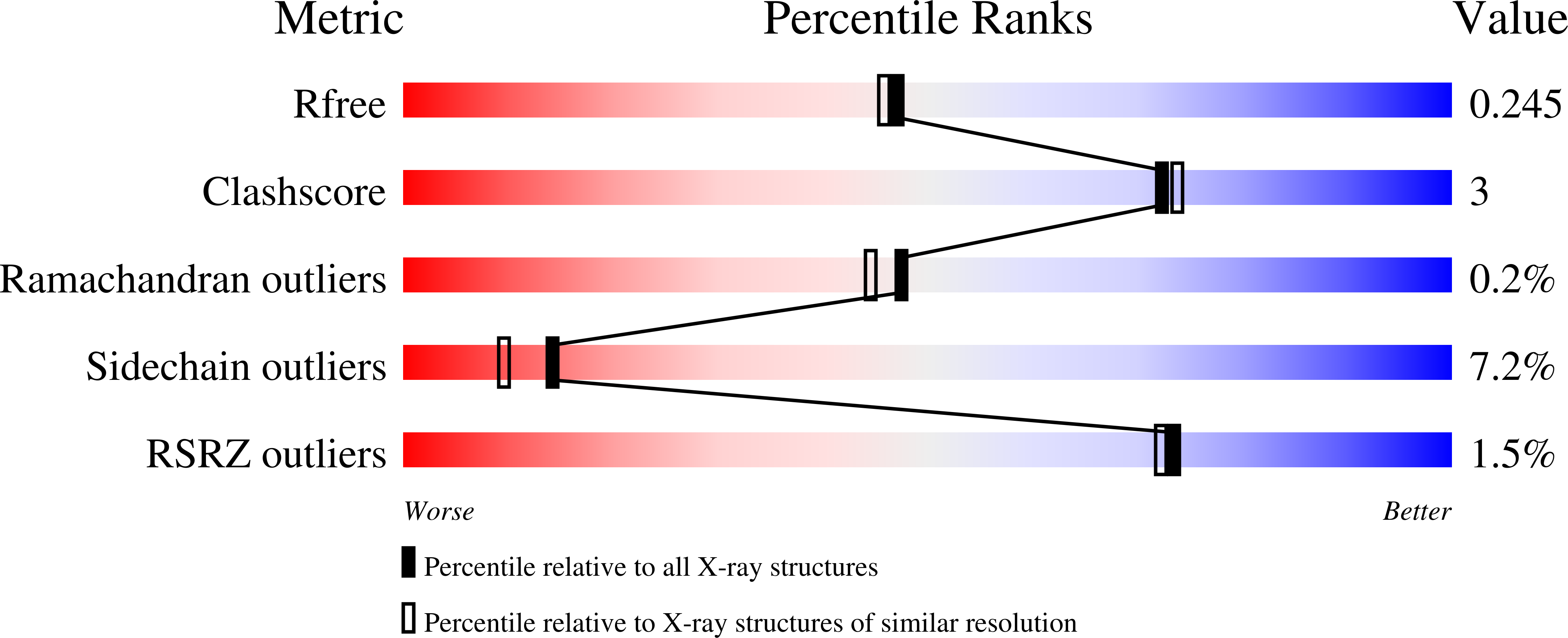Characterization of the dTDP-Fuc3N and dTDP-Qui3N biosynthetic pathways in Campylobacter jejuni 81116.
Li, Z.Z., Riegert, A.S., Goneau, M.F., Cunningham, A.M., Vinogradov, E., Li, J., Schoenhofen, I.C., Thoden, J.B., Holden, H.M., Gilbert, M.(2017) Glycobiology 27: 358-369
- PubMed: 28096310
- DOI: https://doi.org/10.1093/glycob/cww136
- Primary Citation of Related Structures:
5TPU, 5TPV - PubMed Abstract:
The Gram-negative bacterium Campylobacter jejuni 81116 (Penner serotype HS:6) has a class E lipooligosaccharide (LOS) biosynthesis locus containing 19 genes, which encode for 11 putative glycosyltransferases, 1 lipid A acyltransferase and 7 enzymes thought to be involved in the biosynthesis of dideoxyhexosamine (ddHexN) moieties. Although the LOS outer core structure of C. jejuni 81116 is still unknown, recent mass spectrometry analyses suggest that it contains acetylated forms of two ddHexN residues. For this investigation, five of the genes encoding enzymes reportedly involved in the biosyntheses of these sugar residues were examined, rmlA, rmlB, wlaRA, wlaRB and wlaRG. Specifically, these genes were cloned and expressed in Escherichia coli, and the corresponding enzymes were purified and tested for biochemical activity. Here we present data demonstrating that RmlA functions as a glucose-1-phosphate thymidylyltransferase and that RmlB is a thymidine diphosphate (dTDP)-glucose 4,6-dehydratase. We also show, through nuclear magnetic resonance spectroscopy and mass spectrometry analyses, that WlaRG, when utilized in coupled assays with either WlaRA or WlaRB and dTDP-4-keto-6-deoxyglucose, results in the production of either dTDP-3-amino-3,6-dideoxy-d-galactose (dTDP-Fuc3N) or dTDP-3-amino-3,6-dideoxy-d-glucose (dTDP-Qui3N), respectively. In addition, the X-ray crystallographic structures of the 3,4-ketoisomerases, WlaRA and WlaRB, were determined to 2.14 and 2.0 Å resolutions, respectively. Taken together, the data reported herein demonstrate that C. jejuni 81116 utilizes five enzymes to synthesize dTDP-Fuc3N or dTDP-Qui3N and that WlaRG, an aminotransferase, can function on sugars with differing stereochemistry about their C-4' carbons. Importantly, the data reveal that C. jejuni 81116 has the ability to synthesize two isomeric ddHexN forms.
Organizational Affiliation:
National Research Council Canada, Human Health Therapeutics, 100 Sussex Drive, Ottawa, ON, Canada.
















